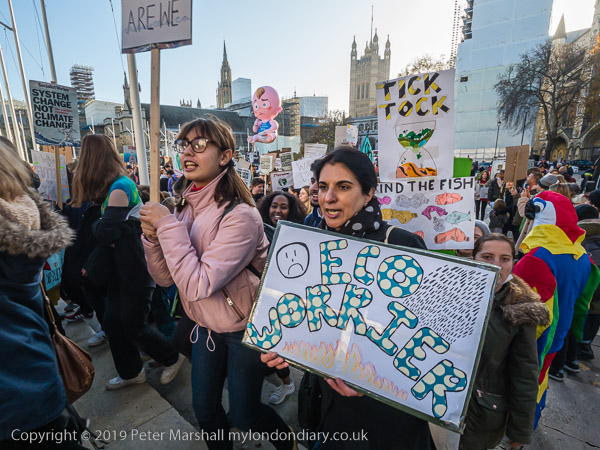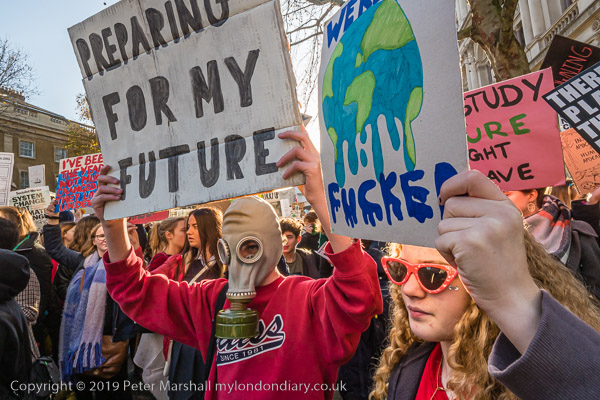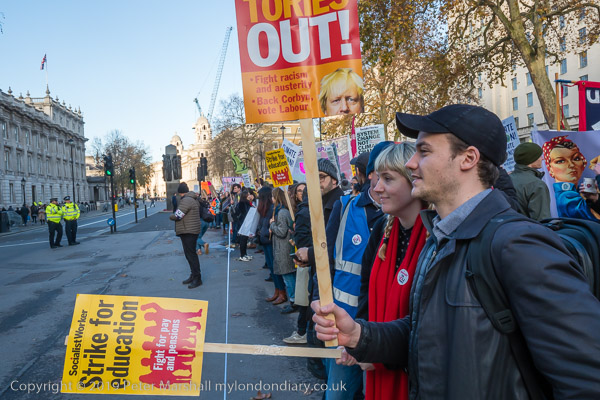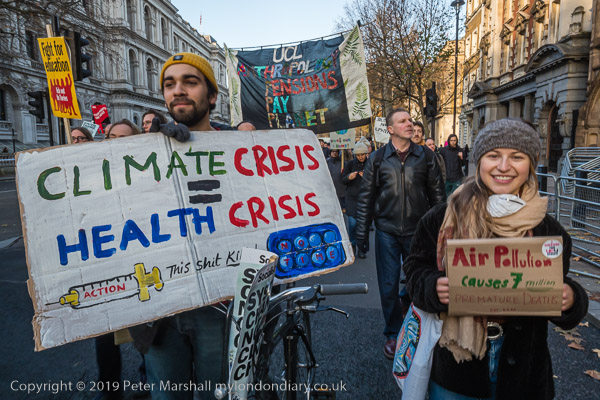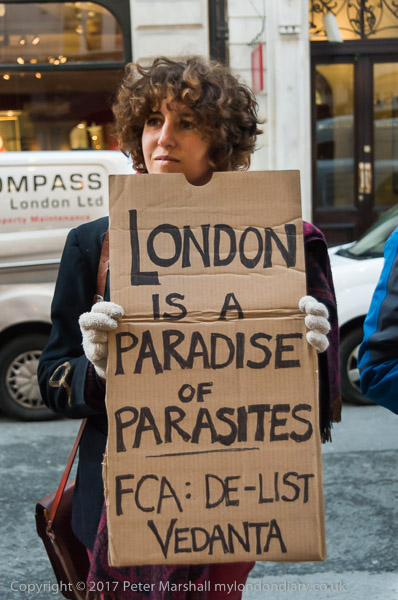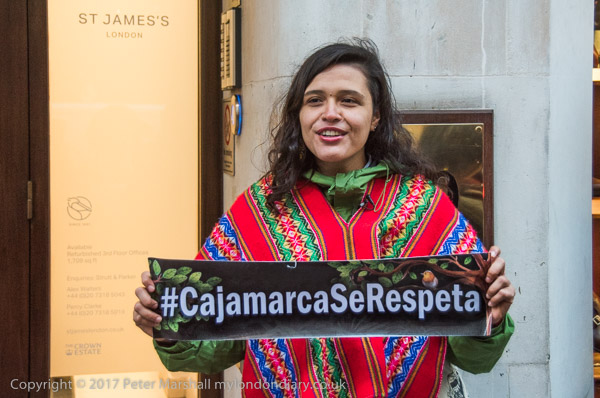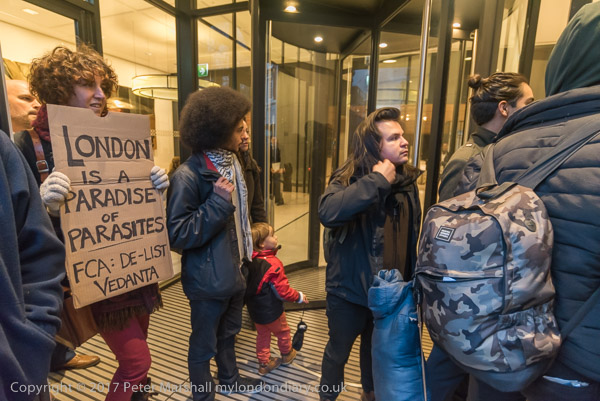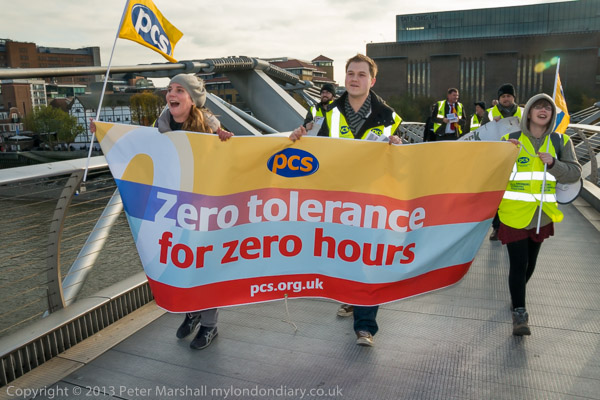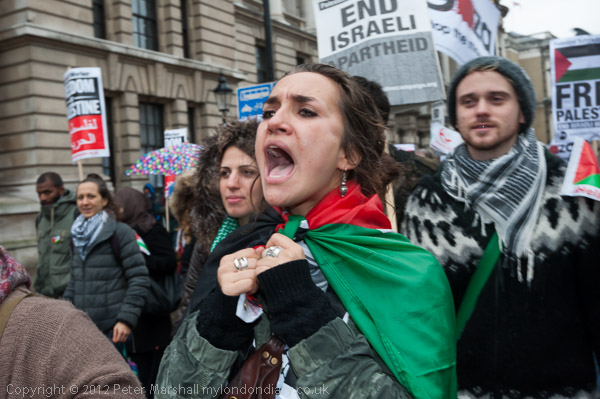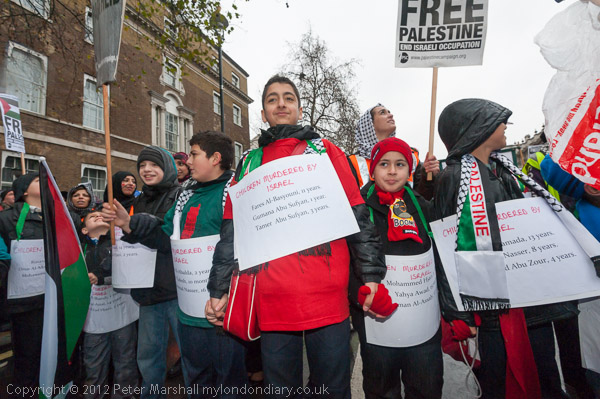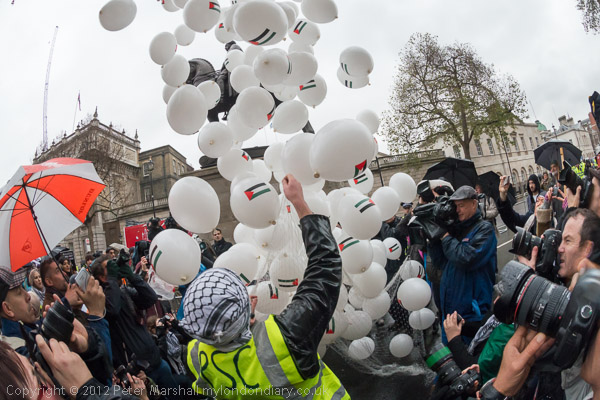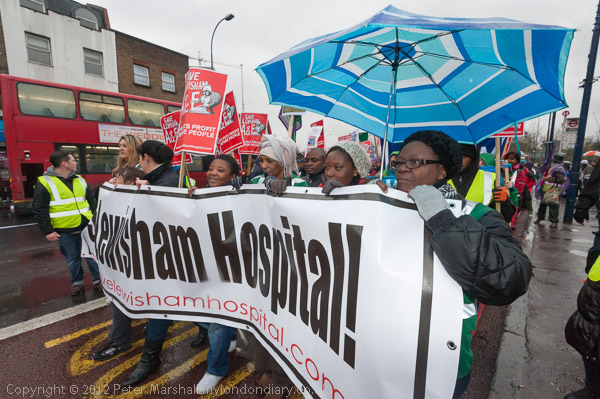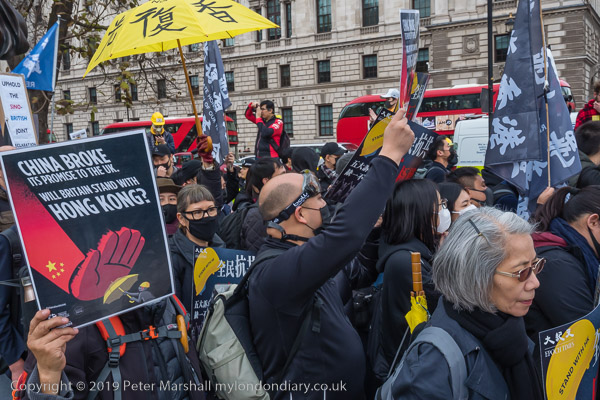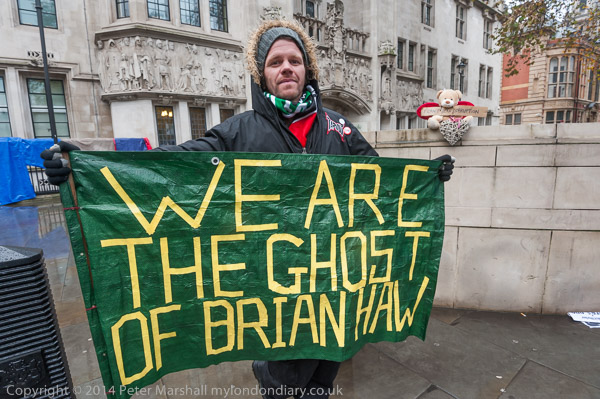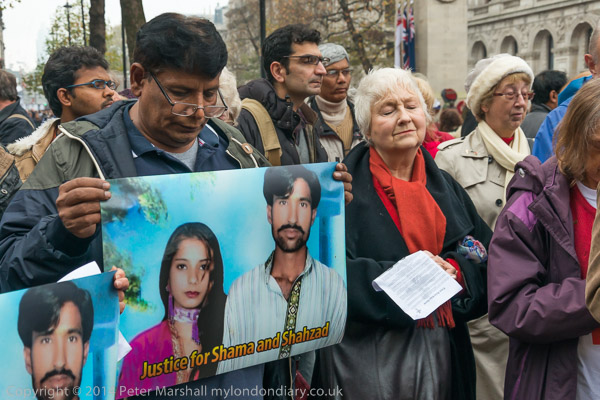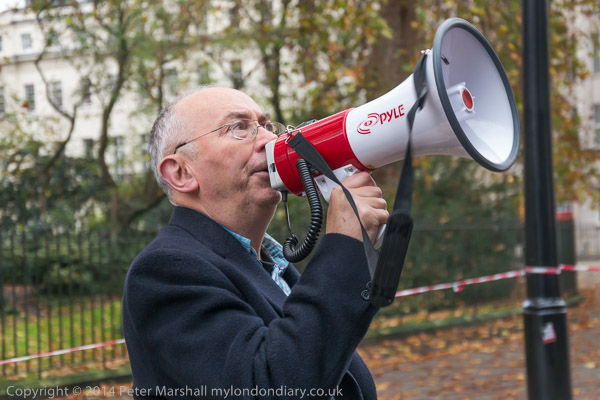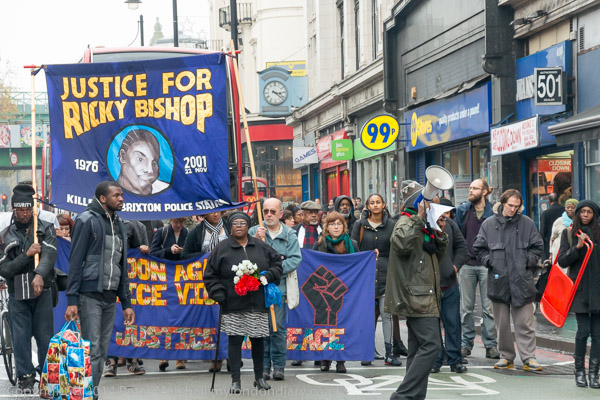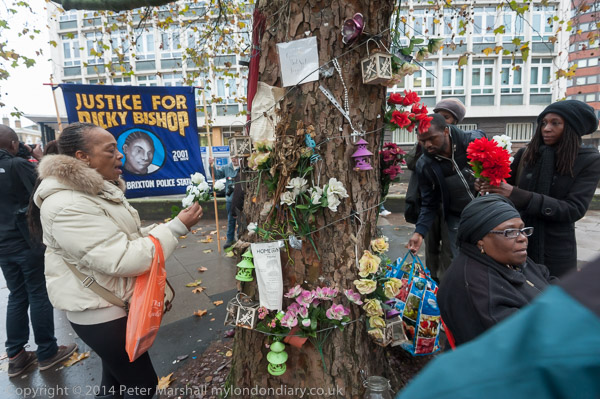TUC Pensions March & Corporate Greed – On Wednesday 30th November 2011 public sector workers across the country held a one-day strike against government plans to cut public service pensions with pickets at thousands of workplaces and rallies and marches in towns and cities across the country as well as a South East TUC organised march in Central London which I photographed. Later in the afternoon I went with Occupy London protesters who occupied the offices of the highest paid CEO in the UK to protest against corporate greed.
TUC Nov 30 March – Lincolns Inn Fields to Westminster

It’s always hard to estimate the numbers on very large marches such as this one but it was very large and when I arrived at Lincoln’s Inn Fields the large space already seemed pretty crowded an hour before the march was due to start. Many people gave up trying to get in waited to join the march on Kingsway.

At the front of the march were Frances O’Grady, Deputy General Secretary of the TUC, NASUWT president John Rimmer (below) and other trade unionists. Many other groups had come with banners.

There were many placards suggesting ways to avoid the cuts, including by taxing the mega-rich and cutting the pointless and wasteful expenditure on Trident rather than job’s health and education.

Some of the students on the march felt it was going to slow and began to march in front of the main banner.

Police stopped them and held up the whole of the march at Aldwych but then didn’t seem to know what to do. Eventually they just let things go ahead.

I took a lot of pictures of the Education Activist Network who were the liveliest part of the protest but there were plenty of others to photograph too with many interesting hand-made posters.

I stopped for quite a while to photograph marchers as they went past.

and they were still coming in large numbers an hour after the front of the march had passed me.

I was still on the Embankment with marchers when the rally had begun closer to Parliament and people were still rolling in. I think there were probably between 20 and 30,000 taking part, but it was hard to know and I think many who had been on picket lines early in the morning had left before the rally began. I left too to meet with people from Occupy London.
More pictures on My London Diary at TUC Nov 30 March.
Occupy London Expose Corporate Greed – Piccadilly Circus & Panton House

Occupy London had called people to meet at Piccadilly Circus at 3pm but had not indicated what would be happening next. I arrived to find around a hundred protesters there along with quite a few Greek football supporters and a large number of police standing around watching them.

We stood in the intermittent rain for around half an hour waiting for something to happen. At 3.30pm around 30 people rushed across the road to stand outside a branch of Boots with the ‘Precarious Workers Brigade’ banner, but made no attempt to enter the store which quickly lowered its metal shutters.

Police rushed across the street to surround them, but soon became clear that this had merely been a diversion, as others close to Eros unfolded their long main ‘All Power to the 99%’ banner and rushed down Haymarket with it catching the police by surprise and leaving them behind.

I was running ahead of them, taking pictures over my shoulder and managing to keep ahead, but the police were well behind as we reached Panton St.
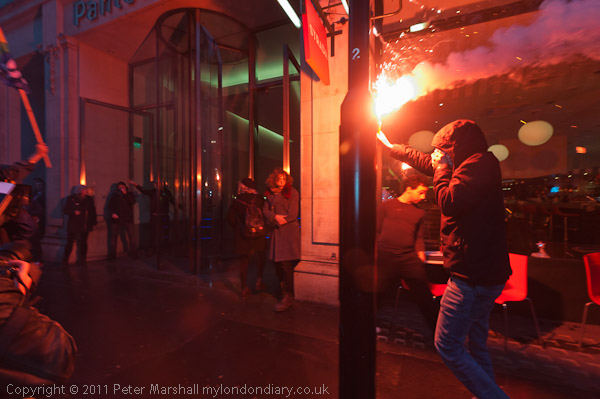
Here the protesters set off a bright orange flare, turned down Panton Street and rushed into Panton House. I followed the group with the main banner inside, but stupidly stopped in the foyer to take pictures through the glass frontage of the flares outside.
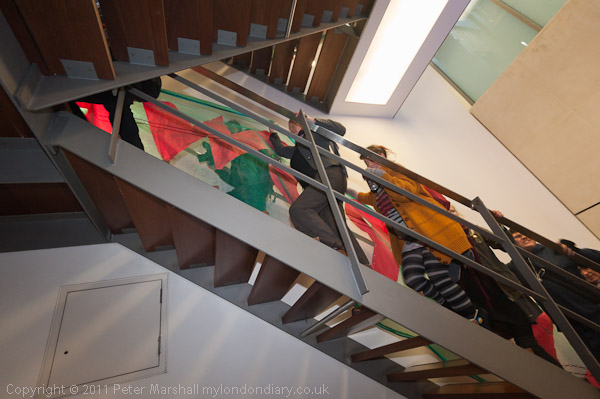
I was a little behind as the protesters ran up the stairs and rather out of breath after running along the street. By the time I reached the third or fourth landing I had decided to give up and pressed the button for a lift. Police arrived just as the lift came and one officer grabbed me stopping me from getting in.

Police told us all to go downstairs, but around 20 of the protesters and a few press had reached the roof. I made my way down, though it was difficult as more police rushing up pushed those of us going down out of the way.

The police had now surrounded the entrance, preventing any more people entering, but were allowing us to go out. I was pleased to get out because the air inside had been thick with the orange smoke and I had been choking slightly, Smoke flares aren’t intended for indoor use.

A little back on Haymarket by the side of the building protesters outside were taking part in a mike chat group chant to inform passers-by what was going on. From this I learnt that Panton House contains the London offices of the mining company Xstrata, whose CEO Mick Davies they say is the highest paid CEO in the UK, and “is a prime example of the greedy 1% lining their own pockets while denying workers pensions.”
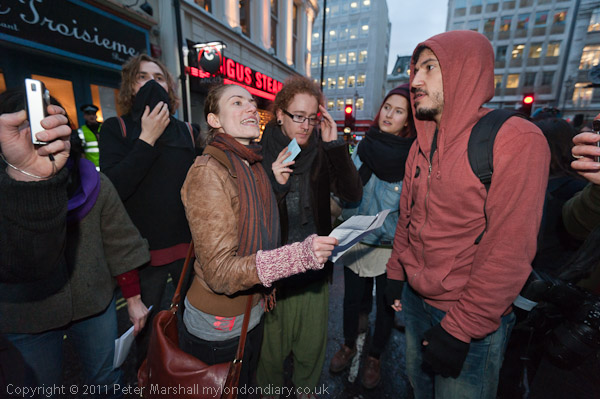
Police began to surround them and I quickly moved away as they kettled the protesters, and also to get a better view of what was happening on the roof. TI had missed seeing the ‘All Power to the 99%’ banner being let down over Haymarket earlier but saw them trying to do so again but being dragged away from the edge. More police vans were now arriving and I decided there would be little else I could see and left.

More at Occupy London Expose Corporate Greed.


